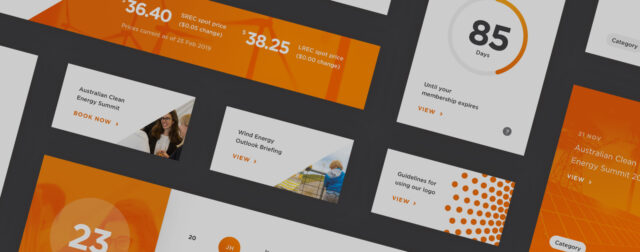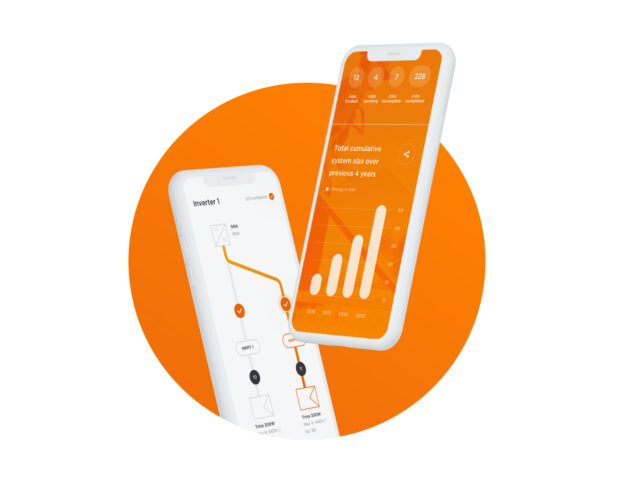
CEC Member Portal
The Clean Energy Council (CEC) is a membership-based NFP committed to accelerating the transformation of Australia’s renewable energy systems. As the peak body for the clean energy industry in Australia, the organisation acts on behalf of its members to lobby the government for improved policy while collaborating with the industry to advance supply and demand for clean energy. They also provide guides and information for those who are thinking about switching to solar or other forms of clean energy.
In 2018, we were delighted to be appointed as the CEC’s digital agency to redesign and redevelop their website. After extensive user research, UX design and testing, we deployed a website that serves a wide variety of users to drive both business results and real, long-lasting change in Australia’s energy sector.

The next phase for Clean Energy Council
There were two aspects to our work with CEC. First, we developed the public-facing area of the CEC website. Once that had been completed, we were asked to re-develop CEC’s user portal, which serves both CEC members and accredited installers of solar, small-scale wind and micro-hydro systems.
From training and accreditation details to complex solar performance calculators, the portal is a self-service area where organisations and sole traders can pay for renewals, apply for additional accreditations, earn professional development points to become further accredited and manage their organisation and permissions.

A digital transformation for members and installers
Our first step was ensuring that members and installers were able to see their account details in real-time, achieved by integrating with CEC’s Salesforce instance, which is the source of truth for member and installer details.
We then tackled the portal. With complex membership and accreditation tiers, various rules regarding accreditation expiry, renewals and a number of ways to pay for and extend memberships, the portal needed to be navigable and present the required information in a clear, concise UI.
The installers needed the ability to watch webinars and take subsequent exams. These activities contribute to their CPD (professional development ‘points’), which allow them to upgrade or renew their accreditation within the portal.
In addition to the management of accounts, details, members and accreditation levels, the portal also had to provide calculators and tools for installers.The first of these was the System Performance Estimator, released in early 2020.
This tool needed to integrate with the GSES weather API to generate daily average temperatures for a location, which would then perform complex calculations based on user inputs for the system, such as the panels’ tilt, azimuth and orientation.
Upon the completion of the API integration and calculations based on user inputs, the estimator generates a performance estimation sheet which can be downloaded or emailed to the client, showing them what to expect from their new solar installation. This estimator, the first of a number of tools to be released, saves installers countless hours in self-generating these outputs for consumers.

Site users needed to be able to switch between the member and installer views of the dashboard, assuming they had both credentials. Those who weren’t already users required an easily navigable process to find whatever information they were searching for.
There were also a number of technical abilities that the CEC required. The new build had to utilise current Salesforce API and Jitterbit middleware to website endpoints for user data, while also integrating with the GSES weather API. Finally, we needed to allow installers to create a ‘job’ with location and customer information, as well as create a section where new calculators and tools could be introduced over time and applied to existing jobs.

A true collaboration
The client conducted research with installers and members to create a technical brief, from which we based our designs. Follow-up consultations were made with the CEC’s technical department, keeping the UX discussion going throughout the design process.
This collaboration eliminated speculative decisions from our designers and allowed installers to test and validate our designs, ensuring valuable feedback was received at regular intervals.
To highlight critical information at a quick glance, we created a dashboard containing customisable modules. This allowed easy access to secondary content and was especially important for displaying the often-missed membership and assessment expiry dates.
We also made it easy to search for any current or previous job entry and see any job’s status. These jobs could be easily set up and contained the technical information required to complete a project, including specific product information, data sheets and instructions.

Installers also required a set of calculators and diagrams that could be easily accessed and used while on site to ensure that correct wiring and electrical criteria were met. Given how critical these calculators were, we designed them for ease of use across tablet and mobile devices.
The interactive diagrams, used for assessing electrical specifications and panel orientation, were the centrepiece of our tools’ design. They allowed installers to simulate and validate system builds before installation, ensuring optimal and safe function. These tools simplified the process and reduced the chance of user errors, ultimately resulting in an intuitive interface for tradespeople already adept at reading these kinds of diagrams.